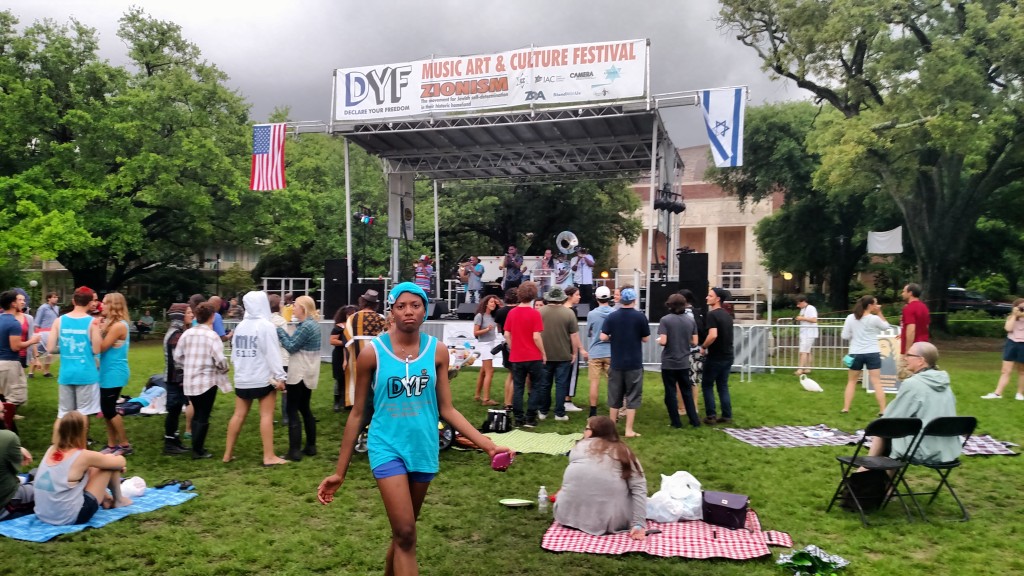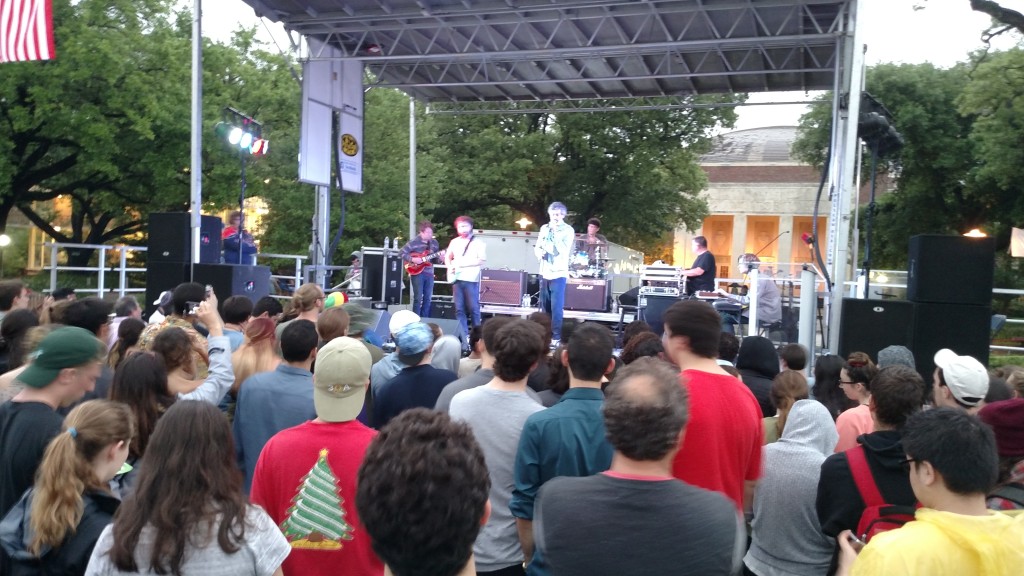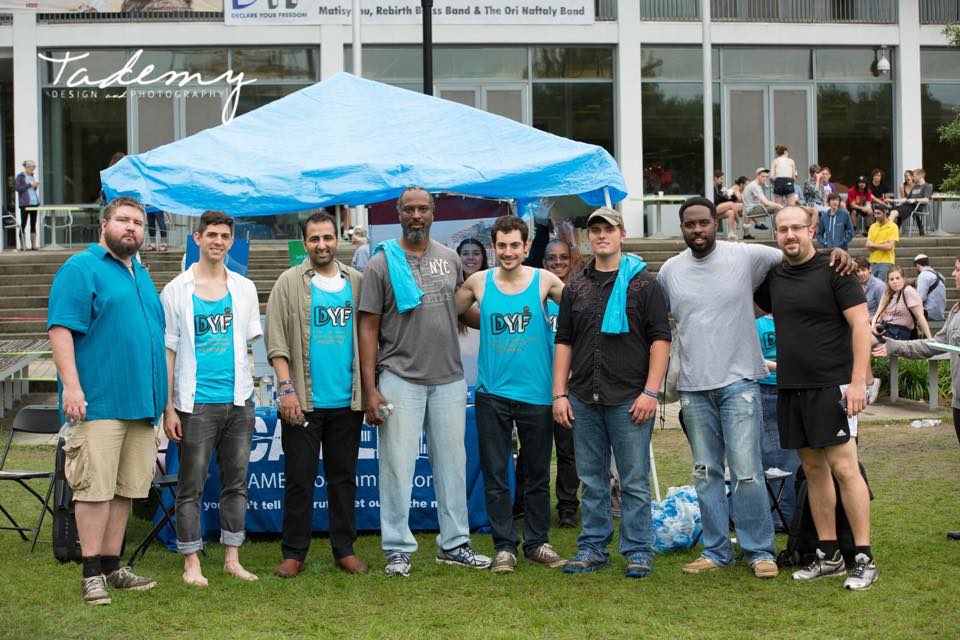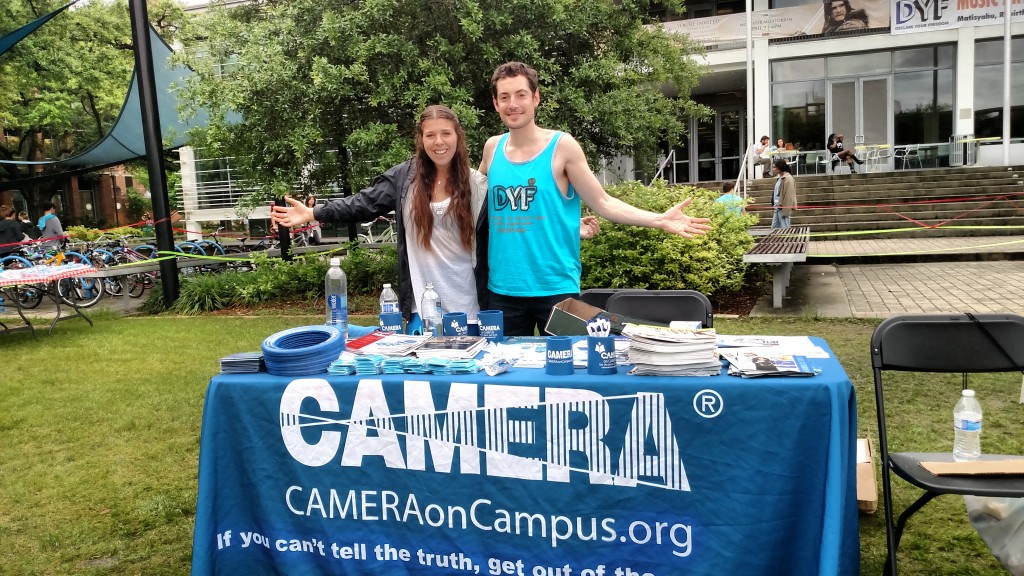This piece was contributed by CAMERA Consultant Chloé Simone Valdary. CAMERA is a major sponsor and supporter of DYF.
April 12, 2015 was a day of transcendence.
Originally founded by myself and Maor Shapira, the third annual DYF Music Festival took place at Tulane University in collaboration with EMET for Israel groups TUSSI (Tulane University Students Supporting Israel) and the University of New Orleans’ Allies of Israel. It was a fierce celebration of Zionism in all its glory.
 Instead of the typical advocating that often takes the form of lecturing and pamphlet-giving, we believe that Israel is fundamentally a story which must be told to all ages and which should be celebrated. This is, to be sure, an emotional approach—one that bypasses argumentation and reaches straight for the heart. Yet the beauty in this approach is that it works almost always to perfection.
Instead of the typical advocating that often takes the form of lecturing and pamphlet-giving, we believe that Israel is fundamentally a story which must be told to all ages and which should be celebrated. This is, to be sure, an emotional approach—one that bypasses argumentation and reaches straight for the heart. Yet the beauty in this approach is that it works almost always to perfection.
 One of the ways in which we set the tone at DYF was by setting up tents which represented different aspects of the universality of the Jewish cause. For example, there was an indigenous tent which highlighted how Jews are indigenous to the land of Israel, and how the historical record is replete with artifacts and customs that testifies to the roots of the Jewish people. The custom of wrapping teffillin, which has existed since the days of the Bible, was displayed prominently and members of Chabad welcomed many to engage in the age-old custom in the tent. Thus the past was firmly connected to the present, both in the pictures in the exhibit and in the day of the festival.
One of the ways in which we set the tone at DYF was by setting up tents which represented different aspects of the universality of the Jewish cause. For example, there was an indigenous tent which highlighted how Jews are indigenous to the land of Israel, and how the historical record is replete with artifacts and customs that testifies to the roots of the Jewish people. The custom of wrapping teffillin, which has existed since the days of the Bible, was displayed prominently and members of Chabad welcomed many to engage in the age-old custom in the tent. Thus the past was firmly connected to the present, both in the pictures in the exhibit and in the day of the festival.
Another cool tent we had was one which conveyed the totality of the history of Zionism. It celebrated the great luminaries of the cause from David Ben-Gurion and Golda Meir to Yair Stern and Jabotinsky. It also demonstrated how a great deal of the Zionist fight in the days of pre-state Israel was against British occupation and imperial rule. Moreover, we championed the rights of Jews to live in Judea and Samaria, a natural right of an indigenous people enshrined in both international law and moral law.
In addition—and perhaps most importantly—DYF was first and foremost fun: art galleries, music, headlined by Matisyahu and a Grammy award winning New Orleans staple, free food, spoken word artists, and some of the greatest speakers in the Zionist movement today. From African-American pastor Dumisani Washington to Indigenous rights activist Ryan Bellerose, DYF 3.0 encompassed the great scope of all who are engaged in the struggle today.
 The majority of the speakers and attendees were non-Jews. This illustrates that it is not necessarily “too political” or “too controversial” to raise issues such as civil rights in Judea or the ideologies of the freedom fighters in pre-state Israel. Rather, it matters how one does it. Instead of preparing lessons in a classroom setting, DYF gives expression to Jewish identity by celebrating its totality in a setting that is both entertaining and inviting.
The majority of the speakers and attendees were non-Jews. This illustrates that it is not necessarily “too political” or “too controversial” to raise issues such as civil rights in Judea or the ideologies of the freedom fighters in pre-state Israel. Rather, it matters how one does it. Instead of preparing lessons in a classroom setting, DYF gives expression to Jewish identity by celebrating its totality in a setting that is both entertaining and inviting.
There was a little inclement weather, which actually worked in our favor, as the show lasted till 1:00 in the morning. Matisyahu performed most of his set with a full band at a nearby bar instead of on the main stage and over 500 people came to watch. Many said it was the best Sunday of their lives and expressed a desire to help out with next year’s event.
There is nothing to describe that moment when we sat on the side of the stage and watched Matisyahu sing classics like ‘One Day,’ and ‘Jerusalem.’ The crowd went insane and as he jumped into their arms and crowdsurfed, as a member of the DYF crew, we could do nothing but beam with joy.
Its funny. That’s the same feeling I get when I’m in Israel.
That is the purest form of Zionism.

